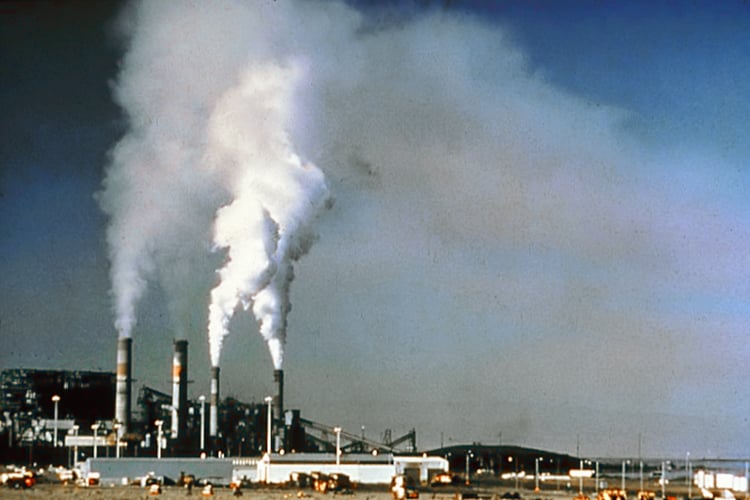
Buying and selling carbon credits has become a great way for companies to express their commitment to the environment, allowing them to continue polluting while also making profits through carbon credit trading.
If you pay a poor country not to cut down their forests, you can get a lot of carbon credits. These credits can be used to burn coal and produce more emissions. It doesn’t matter whether the country actually plans to clear its forests. Investigators found that airlines’ carbon-neutral claims were at least partially supported by credits earned from preventing the clearing of forests that had never been threatened.
The goal of most participants in the climate farce is not effectiveness. By writing a check, they can claim they just “saved” the world. Furthermore, the carbon credits they receive are not based on the money they spend, but on an estimate of the amount of pollution they should avoid.
Every year, China’s coal consumption ranks first in the world, with coal consumption ranging from power generation to steel production reaching 4,319,921,826 tons. But this is considered acceptable because China has also planted large numbers of trees and created a market for trading carbon credits. China’s State Council Information Office assures us that “China’s continuous afforestation efforts have greened the world.” According to climate logic, China’s State Council is right. By planting trees and establishing a market for tradable carbon credits, China has “demonstrated” its commitment to the environment. Signaling seems to be the new goal.
Carbon credits enable companies to meet environmental, social and governance (ESG) standards and virtue signaling without having to reduce global emissions. At the same time, these credit and environmental standards increase costs for companies and countries that comply, while countries like China continue to emit pollutants and produce cheap products. Even Greenpeace agrees that carbon credits are a scam, calling them “greenwashing” and “window dressing.”
“Net zero” and “carbon neutrality” are the mantras of the climate crowd, and they do not necessarily mean that companies stop emissions. These terms mean that companies balance emissions by reducing emissions as much as possible and purchasing enough carbon credits to offset remaining pollution. However, there are no standards for how much must be reduced and how much should be offset. So in theory, they can achieve 100% offset without reducing emissions.
In a cap-and-trade system, the government or regulatory agency sets a cap on the total amount of greenhouse gases that can be emitted. Companies receive a certain number of carbon credits that can be traded on the market. If a company emits less than its allotted amount, it can sell the excess credits to other companies that exceed their limits. Organizations can also voluntarily purchase carbon credits to offset their emissions.
When companies have used up their carbon credits but still need to cause pollution, they can earn more carbon credits by planting trees, preventing deforestation, and developing wind, solar or hydroelectric power to replace fossil fuels. Additionally, they could capture methane from landfills or agriculture to prevent it from being released into the atmosphere. These credits are typically generated through projects that reduce or sequester greenhouse gases, such as reforestation, renewable energy projects or energy efficiency improvements.
The irony of earning carbon credits by developing wind, solar and alternative energy projects is that the companies themselves don’t need to switch to renewable energy. Instead, it could fund the installation of windmills in a village thousands of miles away in Bangladesh. There is no requirement that the village previously burned coal and did not even have electricity. Furthermore, it is not directly relevant whether the village actually uses windmills. Companies earn points based on the carbon emissions saved by projects calculated and verified during the certification process. This certification can be conducted by various agencies or organizations.
Carbon credits have been criticized over concerns about the proper verification of projects and the reality and durability of claimed emissions reductions. Many of these reductions are very subjective. For example, it is unrealistic to estimate the pollution caused by providing electricity to a village that previously had no electricity.
There is often no follow-up to see if the claimed reductions actually occurred. As with taxes, accounting tricks can be used to inflate carbon reductions. However, unlike taxes, the climate ledger does not have overall powers of audit. At the same time, do we really want a monolithic authority with the power to audit and punish based on climate calculations?
When the oil company Shell was discovered to be running a massive carbon credit scam in China, they were targeted by the international media. Shell received thousands of points for convincing Chinese farmers to use energy-efficient farming methods, about half of whom were already using such methods before the program began. What’s even more ridiculous is that the broker for these credits is the Chinese state-owned oil company PetroChina. While many investigators and media outlets called the credits questionable, there was no mechanism to recoup the money Shell made in the process.
Ultimately, carbon credits incentivize the buying and selling of carbon credits rather than reducing the amount of pollution a company produces. Shell is a prime example; the company now has a very profitable business creating and selling carbon credits.

